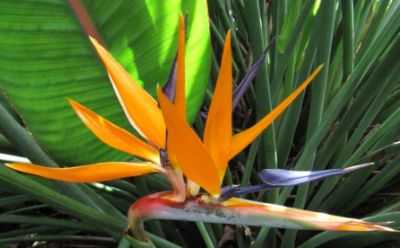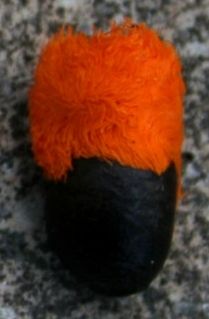Bird-of-paradise flower pigment surprise
The ‘animal-only’ pigment bilirubin is discovered in plants

Aside from the widely recognized shape of their flowers, which resemble the head of a tropical bird, bird-of-paradise plants (Strelitzia spp.) are admired for their vibrant floral coloration. The brilliant orange is even more intense on the furry outside of their seeds, and is able to persist for decades,1 unlike most plant pigments, which degrade rapidly after cell death.
Researchers, eager to investigate the source of such long-lasting and intense colour, set about to try to identify the pigment. They used two powerful state-of-the-art laboratory techniques (high-performance liquid chromatography, and nuclear magnetic resonance) to analyze the chemical structure of the colouring agent in the bird-of-paradise plants. But the chemistry of the orange pigment didn’t match the chemical properties of any known plant pigment.

With rising excitement, the researchers realized this vivid orange was something never before identified in the plant realm. Finally, after a year of comprehensive testing, the researchers identified the orange agent as the ‘animal-only’2 pigment bilirubin.3,4,5,6 In mammals, bilirubin is a breakdown product of hemoglobin (the red pigment in blood), and is what gives the yellowish tinge to the skin of patients with jaundice or bruising. Bilirubin seems to have a useful antioxidant role.7
The finding has astonished the scientific community. What’s an ‘animal-only’ pigment doing in plants? The researchers have subsequently identified it in other flowering plants, too, showing bilirubin is not limited to the bird-of-paradise plant species.8 As yet, how plants produce bilirubin, which in animals is a product of the breakdown of blood, “is still a mystery”.4 Despite the re-think in the evolutionary storyline that this discovery necessitates, homage is paid to the evolution narrative, apparently sacrosanct whatever evidence is turned up:
“The fact that bilirubin exists in both plants and animals may demonstrate the depth of evolution. If bilirubin is synthesized via the same biochemical pathway which is responsible for producing bilirubin in animals, this would indicate that the pathway was likely conserved throughout evolutionary history in both the plant and animal kingdom.”4
‘Conserved throughout evolutionary history’? Only what already exists can be conserved. These knowledgeable-sounding words about “the depth of evolution” skip over the key issue—how could such complex programmed mechanisms and biochemical pathways have arisen at all during ‘evolutionary history’? The idea seems to require an imagination more vivid than the pigment.
Here’s the crux of the matter: history is recorded, not imagined,9 and the most important figure in history is on record as saying of wild flowers, His own handiwork, that “even Solomon in all his glory was not arrayed like one of these” (Luke 12:27). Of course, His message goes much deeper than that, and is open to anyone willing to escape the irrational extolling of a Creator-free existence. Surely a clear choice: the vacuous “depth of evolution” versus “the depth of the riches of wisdom and knowledge of God” (Romans 11:33).
References and notes
- E.g. in herbarium specimens known to have been collected at least 45 years ago. Return to text.
- ‘Animal’ in the biological sense of Kingdom Animalia, a categorization which includes man. Return to text.
- Pirone, C., and 3 others, Animal pigment bilirubin discovered in plants, Journal of the American Chemical Society 131(8):2830, 2009 | doi:10.1021/ja809065g. Return to text.
- Aguila, S., Florida International University scientists find animal pigment in plants, news.fiu.edu, April 2009. Return to text.
- First discovery of ‘animals-only’ pigment bilirubin in plants, sciencedaily.com, 23 March 2009. Return to text.
- Pirone, C., and 4 others, The animal pigment bilirubin identified in Strelitzia reginae, the Bird of Paradise flower, HortScience 45:1411–1415, 2010. Return to text.
- Sedlak, T.W. and five others, Bilirubin and glutathione have complementary antioxidant and cytoprotective roles, Proceedings of the National Academy of Sciences 106 (13):5171–5176, 31 March 2009 | doi: 10.1073/pnas.0813132106. Return to text.
- Pirone, C., and 4 others, Bilirubin found in diverse angiosperms, AoB PLANTS 2010:plq020 | doi:10.1093/aobpla/plq020, 28 October 2010. Return to text.
- See, e.g., Science, history and the Bible, creation.com/natural-history, 28 July 2012. Return to text.


Readers’ comments
Comments are automatically closed 14 days after publication.